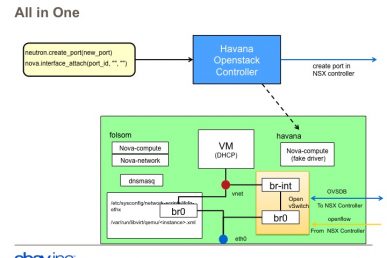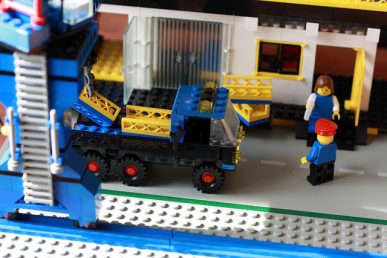Networking is one of the pillars of OpenStack, but new users can get entangled very quickly.
Sriram Subramanian and co-author Sreenivas Voruganti want to help you navigate the twists and turns with a new book titled “Software Defined Networking (SDN) with OpenStack.”
You can pre-order it now in print or e-edition from Packt Publishing. The book is expected to launch around the Barcelona Summit, stay tuned for discounts and giveaways. At around 200 pages, it offers a general overview of Neutron then explores three popular SDN technologies: Open Virtual Network (OVN), Open Contrail and Open Daylight (ODL). Readers should expect to come away with a deeper understanding of SDN technologies and know how they can be leveraged in an OpenStack-based cloud.
Subramanian, whose day job is director of software engineering at Juniper Networks, shares his quest to become a “Neutron Knight” and why writing tasks down is his killer productivity tip.
Who will this book help most?
Having attended many OpenStack Summits we realized there are several new SDN technologies that are attracting lots of attention. However, without a good understanding of the basics of these SDN technologies, I feel that users and developers will not be able to appreciate the power of OpenStack and SDN. This book aims to provide a crisp introduction to several SDN platforms such as OpenDaylight, OpenContrail, ONOS and OVN. This will help the readers explore these technologies on their own.
What are some of the most common mistakes people make with OpenStack?
I believe people underestimate the complexity of OpenStack. While it is an open-source platform with powerful capabilities, it does come with its fair share of challenges. The mindset required to run and leverage OpenStack in production environments is drastically different from other competing technologies. The twice-a-year release and upgrades are other challenges that OpenStack brings with it. From a networking perspective it is very important to understand and evaluate multiple solutions. The sheer choice of Neutron plugins and drivers along with several SDN platforms presents an added layer of complexity in using OpenStack.
Your Twitter bio describes you as (among other things) an “OpenStack Neutron Knight.” Tell me about how you got that title — does it involve slaying “dragons” or other skills?
I came across the phrase Neutron Knight at the OpenStack Summit 2015 in Vancouver, Canada. As a professional from the networking domain, I have tried to “demystify” some key networking technologies through blogs and books. OpenStack Neutron project has been close me because it is among the most complex yet misunderstood project. And it is my endeavor to slay those dragons and make OpenStack networking a friendly yet powerful world.
Why read a book now — there’s IRC, mailing lists, documentation, video tutorials etc.?
As the adoption of OpenStack and SDN increases there will be newer user and developers who will need a common source for developing their knowledge in these areas. The book covers several different SDN technologies and instead of users trying to go through different mailing lists, documents and blogs, they can use the book as a one-stop-shop to get acquainted with popular SDN platforms.
What’s on your OpenStack bookshelf?
I am planning to check out “OpenStack Orchestration” by Adnan Ahmed Siddiqui and eagerly looking forward to an upcoming book titled “OpenStack for Architects” by Michael Solberg and Brent Holden.
Is there “missing manual” for OpenStack you’d like to see?
As a Neutron Knight, I would like to see more manuals around Neutron. The current OpenStack install guide covers a minimal functionality whereas Neutron has a rich suite of networking capabilities. I believe each capability can be addressed in detail using manuals.
You juggle a job, blogging, book writing and speaking – any personal time management tips you can share?
I recommend few key practices to manage time. The first and the most important one is identify what you want to do with your time. You must find goal(s) that are inherently important to you. To help find that time, I advocate planning and writing down tasks instead of keeping them memorized in your brain. You will have to learn to say no and be ready to sacrifice some “low value” activity in order to find time for the things you are passionate about.
- OpenStack Homebrew Club: Meet the sausage cloud - July 31, 2019
- Building a virtuous circle with open infrastructure: Inclusive, global, adaptable - July 30, 2019
- Using Istio’s Mixer for network request caching: What’s next - July 22, 2019

)










